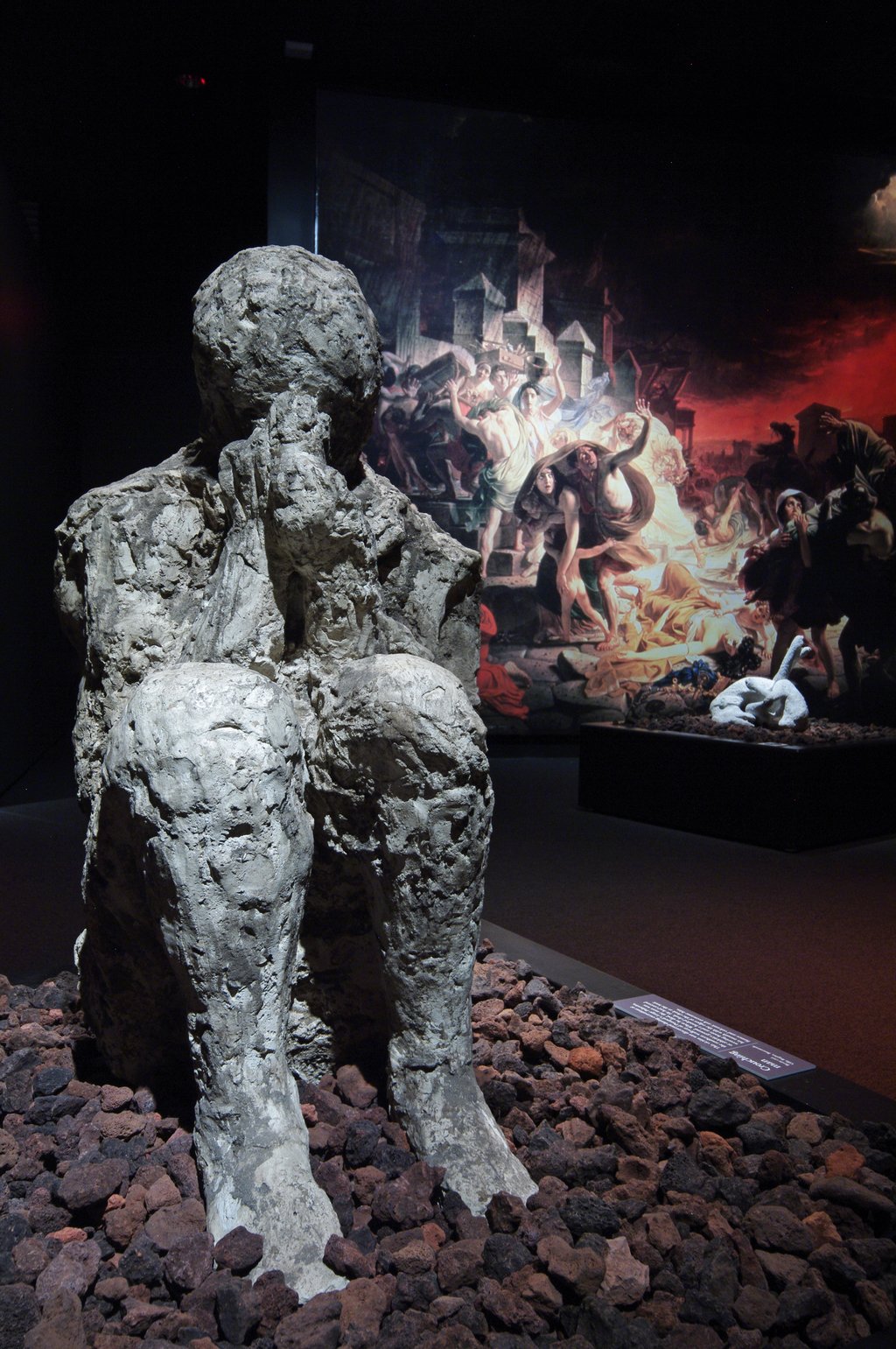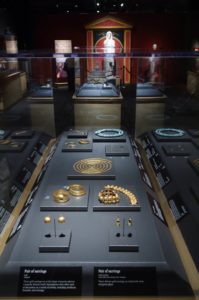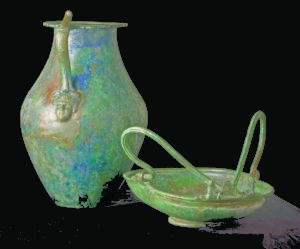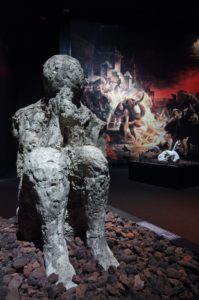Who knew how sophisticated and just how similar people in current times could be to those that lived nearly 2000 years ago? I do now, after being granted a sneak peek at The Denver Museum of Nature and Science’s (DMNS) newest, interactive exhibit, “A Day in Pompeii”. The walk-through experience opens to visitors September 14 and is an impressive journey through the beauty and sadness of their existence as well as their sudden demise triggered by Mount Vesuvius’ most catastrophic eruption.
The lives of the residents of Pompeii are in full view as visitors are allowed to walk through and view preserved relics, casts of its residents, a live re-enactment of a thermopolia (the first fast food joints) and view wall-to-wall facts on the historic event.
Jewelry featured oddly looks like something you would find in the present and is both strange and stirring. The display of artifacts has an uncanny way of making it apparent that even now after thousands of years passing and mountains of ash preserving the city of Pompeii, we are still fundamentally the same. We still long to make our homes comfortable and aesthetically pleasing. We still have the same vain streak in us that longs to make ourselves beautiful. The similarities and artifacts all fuse together an eerie and interesting connection to our own lives. As the tour passes ornate furniture, sophisticated oil lamps and relics, it’s apparent that a vibrant and innovative community was sadly snuffed out.
The Pompeiians were way beyond being able to provide themselves with staples in life like food, shelter and water. The residents were advanced beyond that. They had complex water systems feeding the entire city and individual homes, elaborate gardens and community areas, and they chose to adorn and accent everything in their surroundings. (Kind of like us, right?) Their jewelry, cosmetic jars, cookware, ceramic urns and even the walls of their homes (fresco) were more than functional. They were embellished, artistic and ornate.
Like a surreal step into Pompeii, visitors experience several video stops along the journey. Simulations of the city and of the 24-hour-long period that it took to cease existence give the exhibit a deep, visual and emotional experience. Relics and their uses are brought to life through animation and capture the essence of this time.
Everything, down to the plants growing at the widely visited excavation and preservation site are authentic to Pompeii as it was 2000 years ago because of the ash that encased the city. Casts created from some of the victims are on display and offer a striking view of death. The preserved and stone-like deceased offer a vivid and tangible look at the circumstances engulfing them. Each seems frozen in time, retaining their expressions and poses.
Now, visitors can take a journey through “A Day in Pompeii” and experience this ill-fated, well-preserved city. For more information and to purchase tickets visit DMNS.




